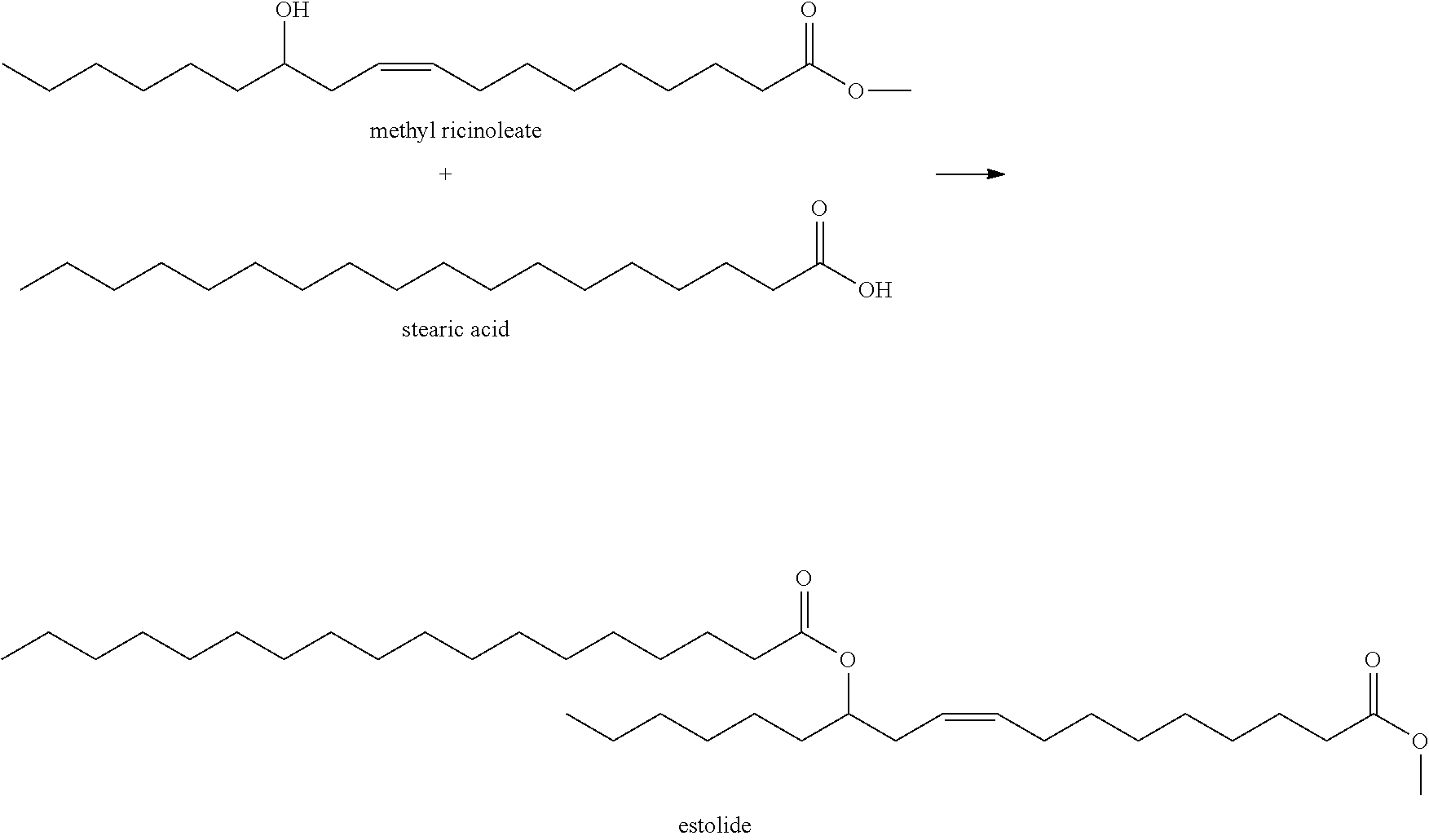Enzymatic process for synthesizing estolides
a technology of estolides and enzymes, applied in the direction of lubricant compositions, fermentation, base materials, etc., can solve the problems of oil being sensitive to thermal-oxidative stress, not showing good performance at low temperatures, and product re-distilled
- Summary
- Abstract
- Description
- Claims
- Application Information
AI Technical Summary
Benefits of technology
Problems solved by technology
Method used
Image
Examples
example 1
[0033]284.5 g of commercial stearic acid (99.0% stearic acid) and 312.5 g methyl ricinoleate (obtained through the transesterification of castor oil) were added to a batch reactor containing 60 g of commercial immobilized lipase (Novozyme 435). The average reaction temperature was maintained at 84° C. for 24 hours, with constant agitation of 100 rpm. The product (estolides) was recovered, and 43% reagent conversion was achieved.
example 2
[0034]853.5 g of stearic acid (P.A. grade) and 937.5 g of methyl ricinoleate (obtained through the transesterification of castor oil) were added to a batch reactor loaded with commercial immobilized lipase (Novozyme 435), such that the enzyme concentration in the reactants was 9% (m / m). The average reaction temperature was kept at 85° C. for 100 hours, with agitation, and 50% reagent conversion was achieved.
example 3
[0035]The following example illustrates the effect of the presence of water in the reaction medium in the conversion of the reaction, through the action of an agent for removing water, in this case a molecular sieve.
[0036]853.5 g of stearic acid (P.A. purity grade) were added to a batch reactor loaded with commercial immobilized lipase (Novozyme 435), as well as 937.5 g of methyl ricinoleate (obtained through the transesterification of castor oil) and 500 mg from a 3 A molecular sieve, so that the concentration of enzyme to the reactants was 9% (m / m). The temperature was kept at 85° C. for 48 hours, and 51% conversion was achieved.
PUM
| Property | Measurement | Unit |
|---|---|---|
| temperatures | aaaaa | aaaaa |
| temperatures | aaaaa | aaaaa |
| pressure | aaaaa | aaaaa |
Abstract
Description
Claims
Application Information
 Login to View More
Login to View More - R&D
- Intellectual Property
- Life Sciences
- Materials
- Tech Scout
- Unparalleled Data Quality
- Higher Quality Content
- 60% Fewer Hallucinations
Browse by: Latest US Patents, China's latest patents, Technical Efficacy Thesaurus, Application Domain, Technology Topic, Popular Technical Reports.
© 2025 PatSnap. All rights reserved.Legal|Privacy policy|Modern Slavery Act Transparency Statement|Sitemap|About US| Contact US: help@patsnap.com

